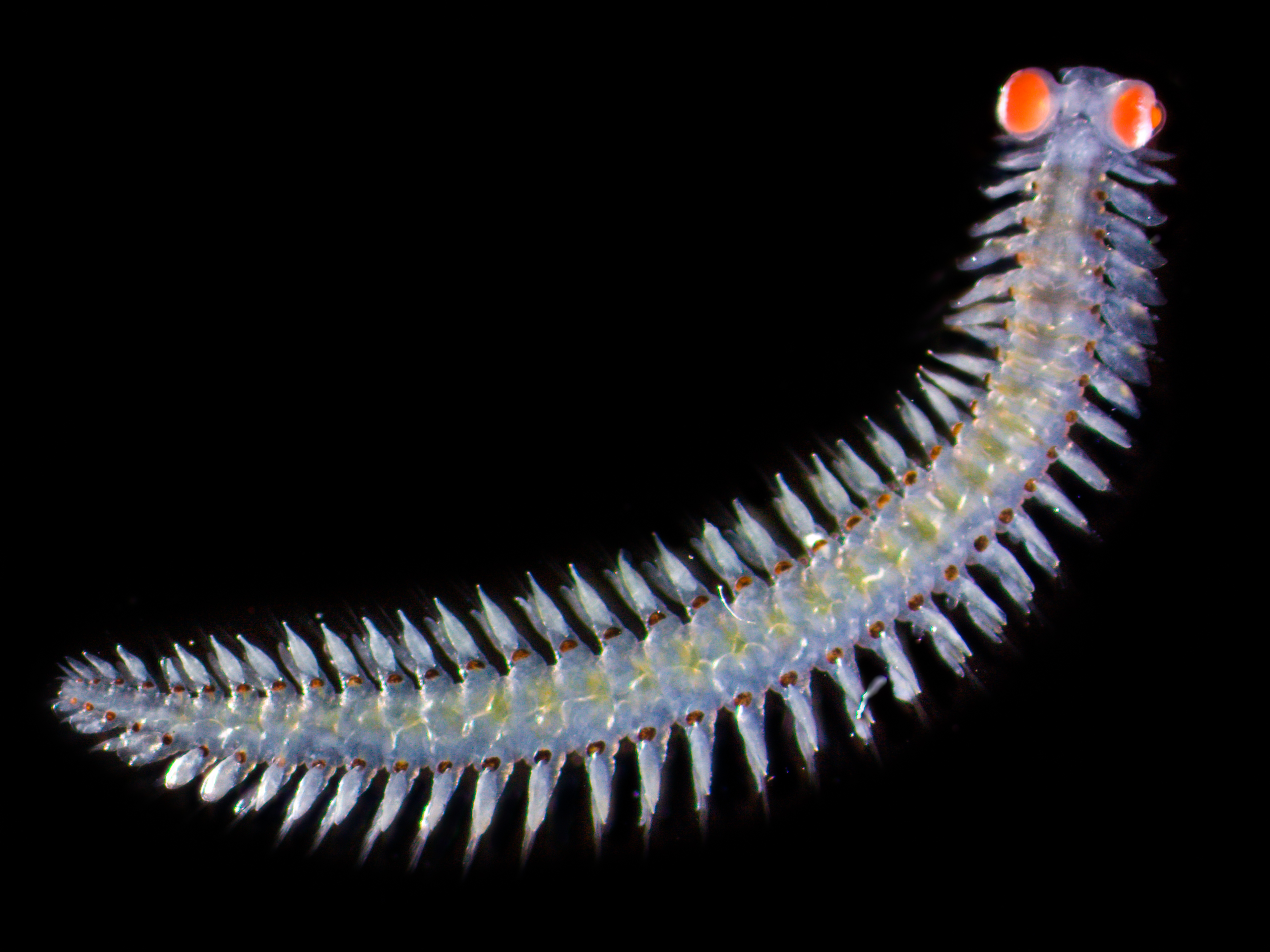Scientists investigating a strange sea critter with an enormous set of eyes have discovered it has surprisingly advanced eyesight for such a small animal, and might even use them for a unique method of secret communication.
Imagine lugging around an extra 100 kilograms (220 pounds) in the form of two gigantic eyeballs. That would probably look incredibly cursed, but that’s the reality – at least in relative terms – for Vanadis bristle worms, which have bright orange-red eyes that together weigh 20 times more than the rest of their head.
However, these odd-looking Mediterranean marine worms are also nocturnal – so what’s the point in them having such massive eyes?
A team of scientists set out to find out, examining the morphology of the eyes, as well as conducting electrophysiological tests to determine what kind of receptors were in the eyes, and thus what wavelengths of light the worms could see.
They also carried out optical analysis to get an idea of the kind of resolution they could see in, though this was a bit more complex than getting a worm to squint at a bunch of letters on a distant poster.

Vanadis is named after the Norse goddess of love, Freya.
Image credit: Michael Bok
The tests revealed that the worms have what the researchers called “outstanding vision”, capable of high-resolution and tracking even small objects and their movements – something that’s pretty unusual for such a creature.
“Its eyesight is on a par with that of mice or rats, despite being a relatively simple organism with a miniscule brain,” said study author Anders Garm in a statement. “It’s really interesting because an ability like this is typically reserved for us vertebrates, along with arthropods (insects, spiders, etc.) and cephalopods (octopus, squid).
It’s still not entirely clear what benefit having such bright, enormous eyes actually has for the worms, but the discovery that their vision appears to be geared to ultraviolet (UV) light has given the team some ideas.
“We have a theory that the worms themselves are bioluminescent and communicate with each other via light,” explained Garm. “If you use normal blue or green light as bioluminescence, you also risk attracting predators. But if instead, the worm uses UV light, it will remain invisible to animals other than those of its own species. Therefore, our hypothesis is that they’ve developed sharp UV vision so as to have a secret language related to mating.”
They also suggest that it could help them see UV bioluminescent prey – but let’s be honest, the idea that they have ginormous peepers to spot stealthy sexy messages is far more amusing.
“Regardless, it makes things truly exciting as UV bioluminescence has yet to be witnessed in any other animal. So, we hope to be able to present this as the first example,” Garm concluded.
The study is published in the journal Current Biology.
Source Link: Bizarre Marine Worm Has Eyes That Weigh 20 Times More Than The Rest Of Its Head